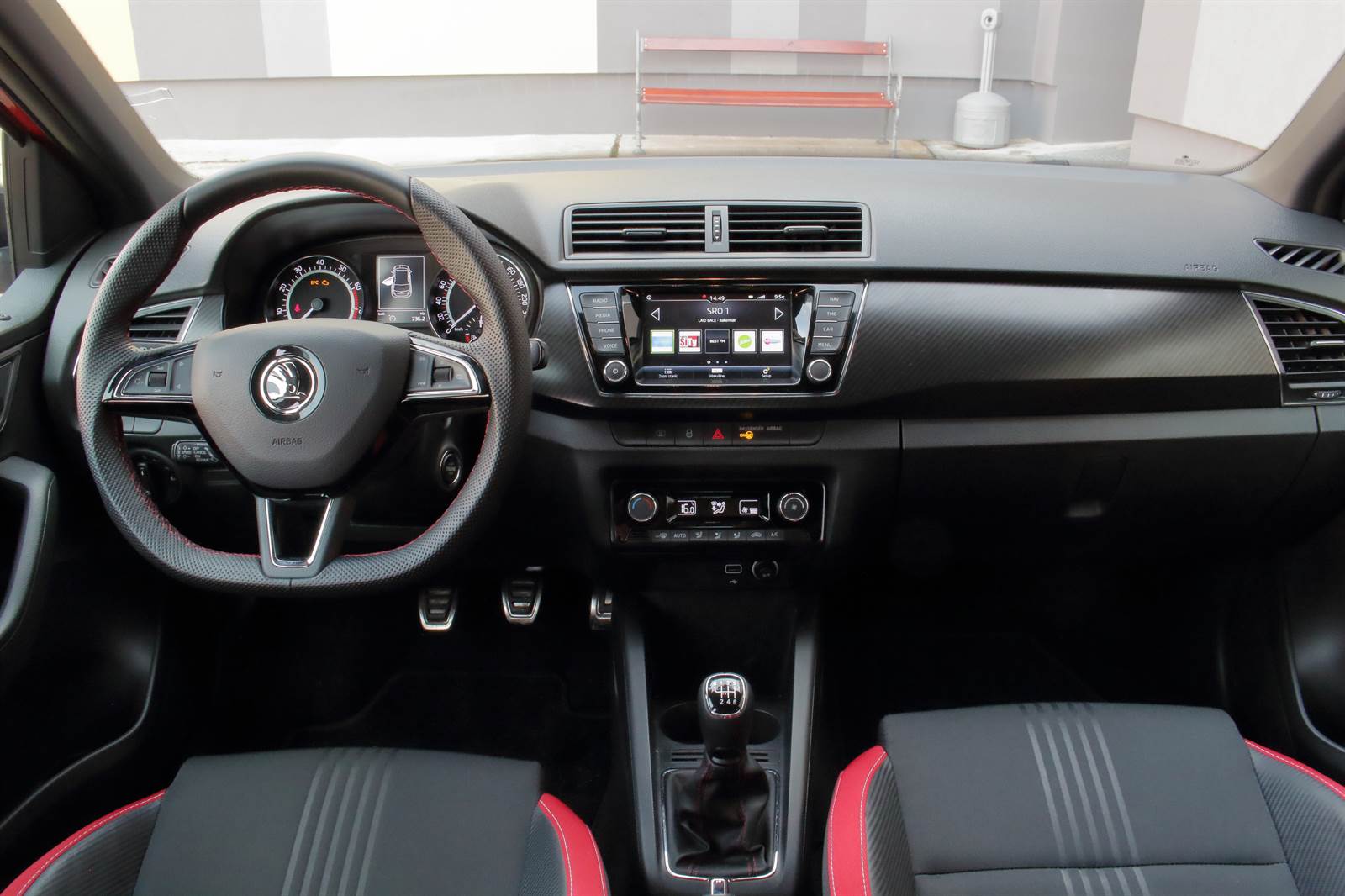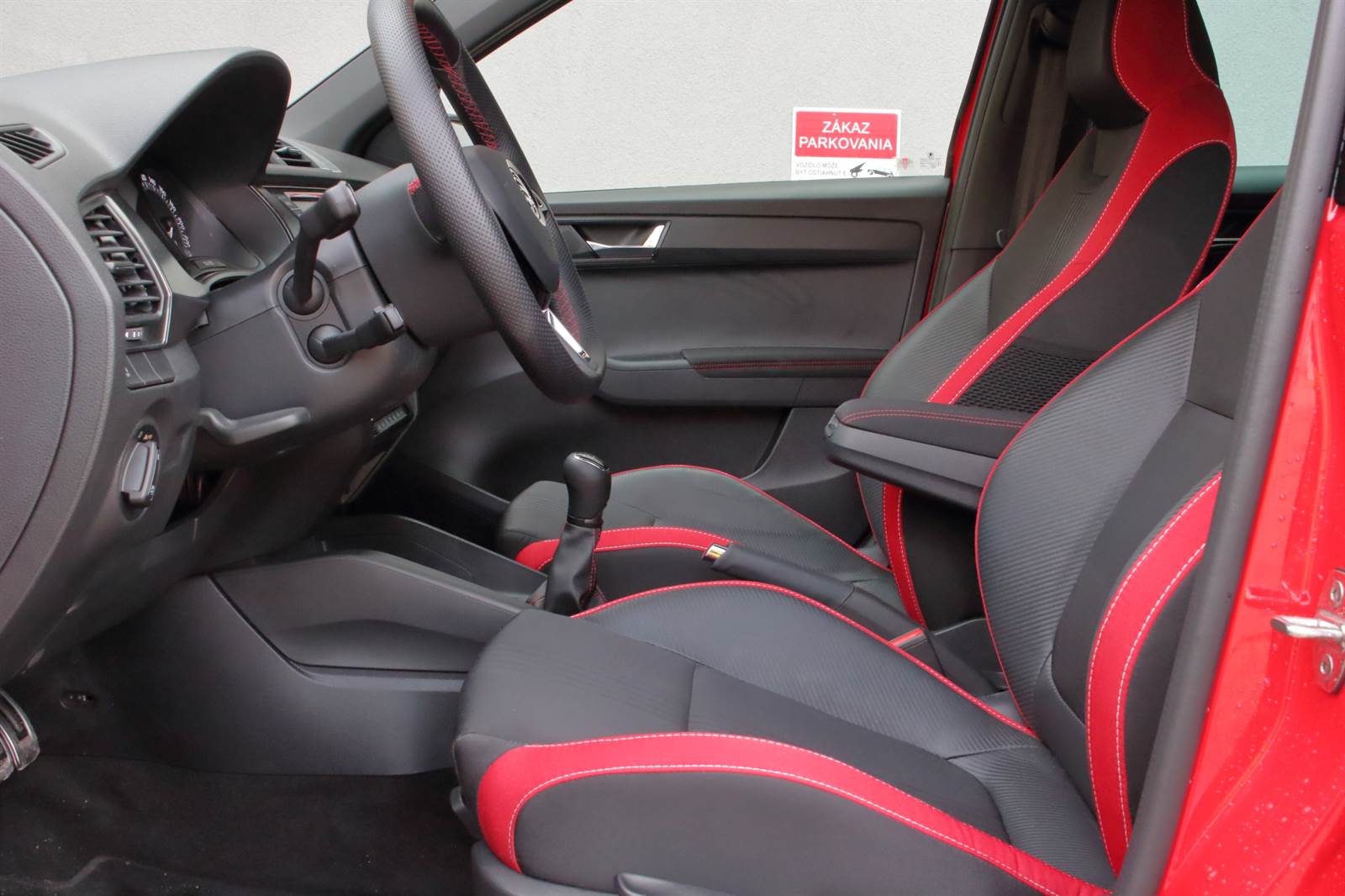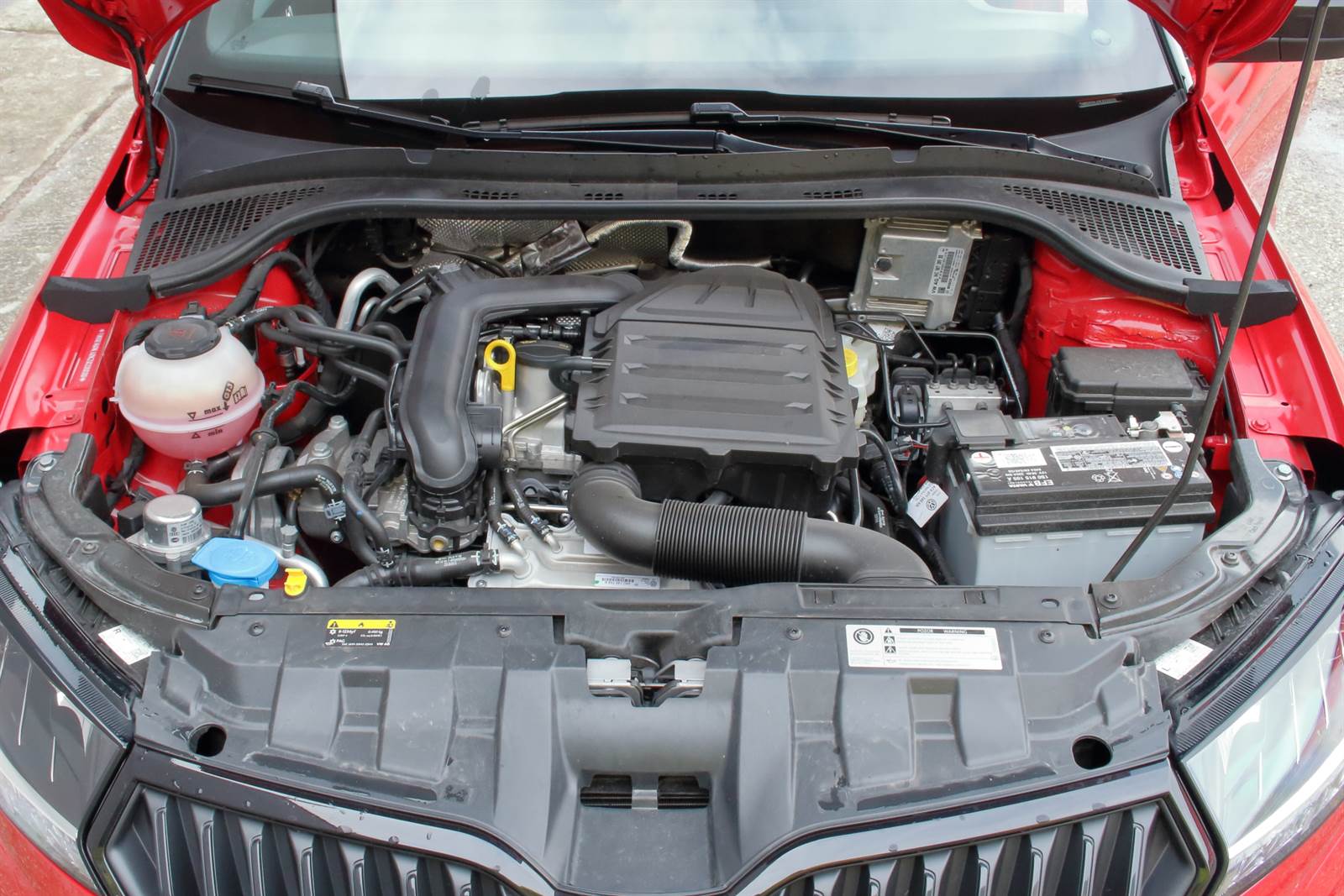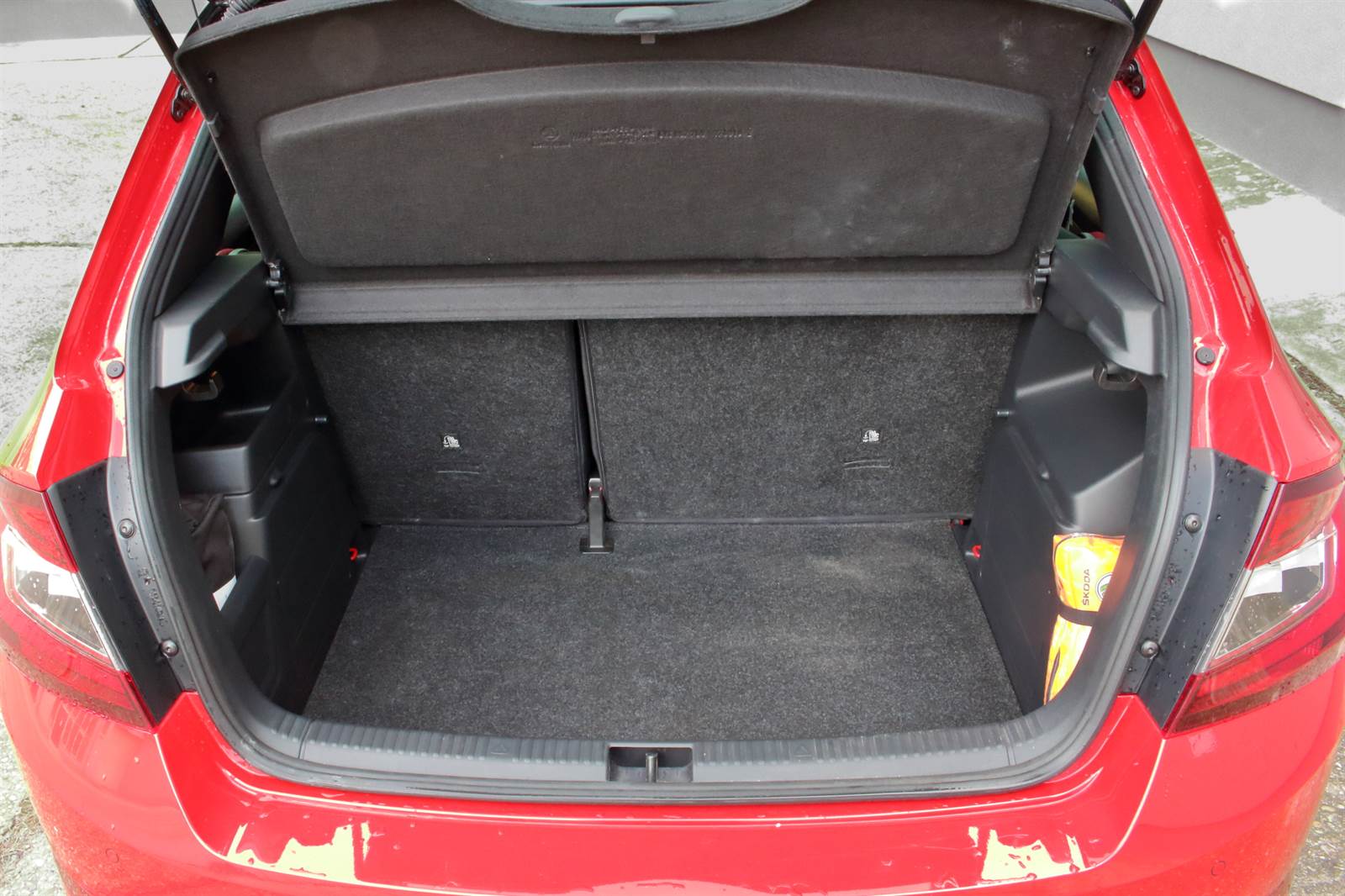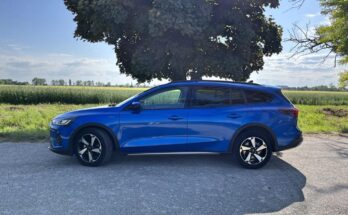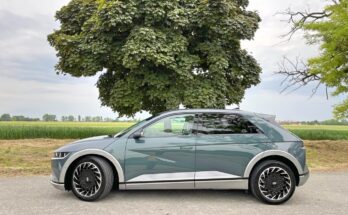Skoda Fabia recently underwent a facelift, which did not avoid even its sporty Monte Carlo version. The combination of two colors, large discs and sports accessories manages to impress, despite the fact that it is one of the most widespread cars in Slovakia. We tried it with a one-liter three-cylinder with a manual transmission.
From the outside
The exterior has not changed much. New headlights and a larger radiator grille in distinctive black brought changes to the front bumper. I consider it impractical to place the radar in its lower part, which is more prone to dirt. Reflectors have been added to the lower part of the more delicately shaped rear bumper. So much for the changes compared to the pre-facelift model. Overall, the car looks fresh, which is also helped by the deep red color in contrast with the black roof and large, same-colored 18" wheels.
I personally like the car especially from the side-rear view, where the molding stretching from the front lights to the rear stands out, and especially the massive rear spoiler in the color of the roof.
Inside
Compared to the previous model, I did not notice any difference except for the different upholstery of the seats. The dashboard is made entirely of hard plastics, which is mostly standard in this class. I was pleased with the distinctive sports steering wheel taken from larger models. I was also satisfied with the clear instrument panel providing, in addition to the traditional analog indicators of speed and revolutions, the temperature of the coolant and the level of fuel in the tank. A relatively large TFT display displaying rich on-board computer information is conveniently and logically controlled by a rotary button on the steering wheel.
I would welcome a slightly larger infotainment display, after all, only 6.5" is a bit small by current standards. However, I appreciate the logic of the layout of the controls, the responsiveness of the touchscreen and the Android Auto support.
Sports seats with red upholstery elements, aluminum pedals, dashboard decor reminiscent of carbon and a black ceiling enhance the sporty impression of the interior, which distinguishes the Monte Carlo model from the regular Fabia product line.
Driving
At first, I was worried about how I would fit into the seemingly subtle interior with my height of 185 cm. However, they disappeared as soon as you sat behind the wheel for the first time. There is plenty of headroom and similarly I had no problem with the space at shoulder level. The seats can only be faulted for the absence of an adjustable lumbar support, or at least for their more prominent shaping in the lower part of the back. I was satisfied with the length of the seat and the height of the backrest. However, the integrated and therefore non-height adjustable headrests may no longer suit taller people.
The posture is pleasantly low with the legs stretched forward. I also rate the steering wheel adjustment range and the distance of the pedals from the seat very well. The driver's legroom is excellently designed with a large left leg rest. However, I would have liked more distance between the brake pedal and the clutch.
I positively evaluate the view in every direction, including sufficiently large rear-view mirrors. The only ergonomic offense I would call the control of the adaptive cruise control with a separate lever on the left side under the steering wheel. Other controls are logically placed and easily accessible. I also appreciate the use of single-purpose buttons to control the ventilation. I only used the armrest on the highway, because its position interfered with my manipulation of the gear lever.
The Fabia was powered by the most powerful engine in the model's range. It is a three-cylinder gasoline unit with a volume of 999 cm 3 , a maximum power of 81 kW between 5000-5500 revolutions and a torque of 200 Nm between 2000-3500 revolutions. After starting it, I expected vibrations, or noise typical of three-cylinder engines in the past. However, nothing similar happened. Even after a cold start, the engine is exceptionally quiet and does not produce any vibrations.
Below 1500 revolutions, the engine is completely dead and has a tendency to go out, and therefore it is necessary to handle the light clutch carefully when starting. Just below 2000, however, the engine wakes up and performs a decent and smooth pull for its volume, ending just before the limiter. The longer gears of the 6-speed manual gearbox contribute to low consumption, but they take away from the dynamics of the car. Reactions to the gas pedal are not the fastest, but keeping the engine at higher speeds can eliminate this problem.
I was satisfied with the control of the gear lever, whose short and precise paths contribute to a sporty feeling behind the wheel. I also had a good feeling about the steering, which does not provide feedback, but offers a pleasantly stiff booster with the same resistance in every position of the steering wheel.
Considering the used wheels with size 215/35 R18, I did not expect a very comfortable ride. Yes, the chassis is stiff and the crew will feel every big unevenness. In bends on a bumpy road, the rear axle dances and surprises even the over-reacting ABS, which causes a weak braking effect on an undulating road even with a gently pressed pedal. However, these initially negative characteristics of the car make it very playful and draw the driver into the game. A decently adjusted chassis manifests itself in small body inclinations, it shows neutral characteristics for a long time and it lets you know in advance about the upcoming understeer.
Due to the turning diameter of 10.4 m and the good view, the car handles well in the city. However, I would appreciate the front parking sensors, which the tested car did not have. I was satisfied with the car even on the district roads, where the fun character of the car with sufficient dynamics showed. However, for frequent and long-term driving at highway speeds, I would give the Fabia a basket. Above the limit of 120 km/h, the aerodynamic noise is already significant and after a long time it starts to bother.
I kept the average consumption at the limit of 6.5 liters with the majority of highway driving. On the highway, while observing the speed limits, it did not exceed a seven and a six on the roads. Consumption in the city depends on the current traffic, but usually does not exceed the limit of 7.5 liters. The 45-liter fuel tank is realistically enough for almost 700 km.
Practical side, equipment, price
The space in the back seats is directly proportional to the small dimensions of the car and the short wheelbase. However, the child seat is easy to install and a family with two small children can fit. The luggage compartment with an average volume of 330/1150 liters pleases with a number of "Simply clever" solutions, such as hooks and storage boxes for smaller items.
The price of the Fabia Monte Carlo with the tested engine and manual transmission starts at EUR 14,340. However, the price of the tested car, equipped with a number of accessories, exceeded the amount of EUR 18,000, which I already consider too ambitious in this class.
Verdict
The Fabia impressed me with its design, excellent sitting position, playful chassis and above-average driving characteristics on a high-quality road. Despite my initial doubts, I was surprised by the sophistication of the one-liter three-cylinder and its sufficient performance. If I was interested in a car of this class, I would certainly not pass up the Fabia, and if I were to choose it, it would be in the Monte Carlo trim. Learn more about: operational leasing for private individuals



